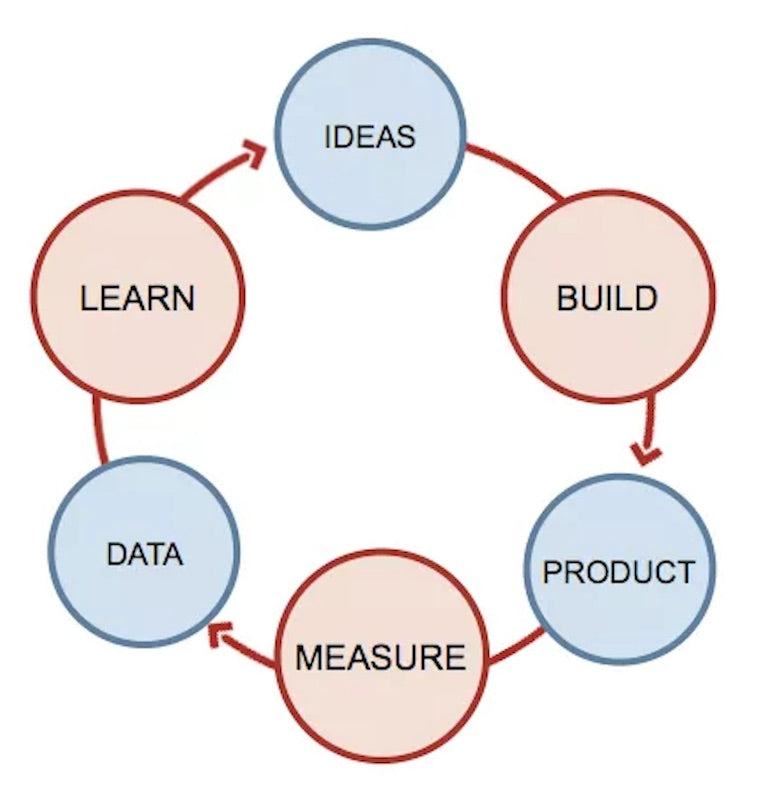In today’s fast-paced and highly competitive world, companies are continually searching for new ways to work more efficiently. Often, what determines how efficient a product team can be is the process that they follow when creating products. Since it’s impossible to work efficiently if you follow an inefficient design process, this has a significant impact on the final results of a project.
To help make 2020 the year that product teams rethink the process they follow when creating products, below are five changes that will speed up, improve, and iterate on the design process.
1. Hire many great designers
Many product teams still believe in the power of the talented solo designers—designers who can solve the most complicated tasks working completely alone.
Of course in real life, product design doesn’t work in this way. The best designs rarely come from a single mastermind designer; instead, they come from teams that work together as a unit.
In order to work as a unit, the team needs to.
Build a shared vision
Shared understanding is what creates the foundation for great design. This understanding is created when everyone on a team has a shared goal, and know how they can achieve it (in other words, when they have a clear product strategy). Every team player should understand the role they play in this strategy. When this understanding is reached, everyone knows the value they bring to the organization, and this can motivate them to work harder.
Create an environment that supports collaborative work
It’s not uncommon for products to be created by multiple teams with numerous disconnects between them. The most common example is when design and development teams communicate with each other only during design handoff, instead of throughout the entire design process.
However, without any doubt, good collaboration and communication between all people involved in the design process (developers, designers, researchers, product managers, etc.) is an essential requirement for product success. Collaborative work in a cross-functional team not only brings in different perspectives, but also initiates parallel processing of the tasks.
When people work closely together, they start to understand the needs of each other better. And this understanding helps the team move faster.
You might also like: Giving Feedback: What We’ve Learned About Building Strong Design and Development Teams.
2. Break barriers to innovation

In the past couple of years, the word “innovation” has become almost a buzzword in the design community. Every team wants to create innovative, breakthrough products. But innovative designs don’t happen because a team suddenly decides to create only innovative products—instead, they are born from environments that actively support innovation. There are two essential aspects of these kinds of environments.
"Every team wants to create innovative, breakthrough products. But innovative designs don’t happen because a team suddenly decides to create only innovative products."
a. Every voice is being heard
There are dozens of examples of times when an idea that seemed ridiculous at first resulted in a commercially successful product. This is why it’s essential for a product team to be open-minded. Each team member should be able to share their thoughts on how to solve the problem. Team members should get together to discuss all ideas, and the best ideas should be further worked upon.
b. There is freedom of action
Creative freedom is an essential ingredient of innovation. People are far more motivated to build solutions they came up with rather than to build a solution that someone handed to them. It’s vital not to force people to follow a specific path—instead, let them come to their own way of solving the problem.
3. Follow the Lean UX method when creating products
The Agile process is the backbone of the design process for many companies. It allows product teams to work fast. But even with powerful Agile methodologies, it’s still possible to spend a lot of time creating a product that will need a refinement (or even a complete rework) after its release. To understand why this happens, we need to take a step back and discuss the common pitfall that many product teams fall into when creating products.
Every product design starts with an assumption—the product team believes that they framed the user problem correctly, and all they need to do is to create an actual solution. Quite often, product teams skip the validation phase for this assumption—instead, they simply create product requirements.
What happens next is that the team works hard to create a tangible solution that it plans to test with users. All too often, the first results of user testing show that the solution doesn’t work for real users. If you’ve ever been in such a situation, you know how hard it is to see that your solution has collapsed.
Product teams should stop assuming that they know exactly what they’re building. Instead, they should frame everything as a hypothesis. By its nature, a hypothesis is a guess, and each guess should be validated before a product team commits to building something. And after a product team forms a hypothesis, it needs to find the fastest way to validate that hypothesis.
"Product teams should stop assuming that they know exactly what they’re building. Instead, they should frame everything as a hypothesis."
Lean UX provides a simple way to do just that. This framework combines the Agile development methodology with the principles of the Lean Startup methodology. Basically, Lean UX is a quick and easy way to question and prove a hypothesis without building a real solution. Teams that practice Lean UX build products very quickly—they measure whether or not they’ve created the right thing, learn from that, and then iterate. The goal is to cut down on the amount of time it takes to complete a feedback loop.

Take a different approach to design deliverables
UX design for digital products has traditionally been a deliverables-based practice. The value that the team brings to an organization was determined by whether the team was able to create something tangible (such as a prototype).
But if a product team wants to practice Lean UX, it should change this way of thinking—switch from “we shipped the feature” to “we created something that positively impacts user behavior.” Lean UX teaches us that we shouldn’t design something just because we can—instead, product teams need to put less emphasis on deliverables and more on the experience being designed. A product team shouldn’t commit to building something before the team knows exactly how this change will be beneficial for their users.
Ask better questions
Lean UX also teaches us to ask better questions. Whenever stakeholders propose a feature request, product teams focus on the “why” instead of the “how.” When thinking about a brand new feature that can be built in a product, the key question shouldn’t be, “How soon can we ship this feature?” but, "Should this feature be built in the first place?"
Test your hypothesis with real users
To employ user-centered design strategies, product teams need to test out their design hypotheses with real users. Product teams should have user feedback at the heart of their design. It’s essential to understand the key goal of testing—to understand whether or not a design meets user expectations.
4. Make user research a natural part of the design process

Most product teams are familiar with user research and the benefits that it brings to the product design process. Properly conducted user research can tell you a lot about a product’s users—who they are, what they want to accomplish, and how exactly they want to do it.
Despite the fact that many product teams are familiar with user research techniques, it’s still not that easy to integrate user research naturally in the design process. In fact, it’s one of the most challenging tasks for product design teams.
You might also like: How to Conduct Research That Drives A/B Testing.
Introducing a new role: ResearchOps
Previously, we discussed DesignOps (design operations) and their role in the design process. But it’s not only the designer’s role that has evolved in recent years—the understanding of the user researcher’s role has also changed. Just a few years ago, the role of user researcher was all about running studies and analyzing results. Today, it’s not limited to those activities. Now, a user researcher is also a user evangelist—someone who focuses on growing the product team’s understanding of their users.
"A user researcher is also a user evangelist."
And so, the role of ResearchOps—or research operations—has also emerged.
ResearchOps is not only about scaling research and research processes, but also about leadership. The ResearchOps team creates a research strategy that allows them to run high-quality studies at the right moment of the design process. ResearchOps also motivates the product teams to leverage the results of usability testing to make the product experience better. The latter can require conducting training and building new channels for communication.
5. Redesign product team meetings

The moments when all team members get together to discuss different ideas and share their perspectives are crucial for project design. Unfortunately, way too many meetings fall flat—they deliver much less value than expected. It’s time to change that. Product teams shouldn’t complain about bad meetings; instead, they should redesign them.
Introducing meeting hygiene
Meeting hygiene is a practice of reducing unnecessary meetings and improving the efficiency of existing ones. Before conducting a meeting, product teams should be clear about the meeting objective—the purpose of the meeting should be stated in the invite. Each meeting should have a clear agenda, and should end with a list of tasks assigned to particular team members.
You might also like: 9 Tips for Getting the Most Out of Post-Mortem Meetings.
Design critique sessions
Design critique sessions are a special type of meeting intended to collect feedback on proposed design ideas and approaches. Product team members meet to discuss current design approaches or competitor’s designs.
While a critique session might sound like a brainstorm session, there’s a significant difference between the two. The primary goal of a brainstorming session is to come up with new ideas, while the primary goal of a critique meeting is to evaluate the existing design approach and identify future changes.
Knowledge sharing is the primary reason for conducting critique sessions. During each critique session, the team engages in a conversation about what makes a great design. Frequent, well-executed critique sessions improve the team’s understanding of design.
You might also like: How to Give Good Creative Feedback.
We can always improve the design process
The market is changing, and digital products are becoming more and more sophisticated. Product design should also evolve to satisfy the growing needs of the market.
Always look at how the design process can improve, whether that’s with how your team communicates, your brainstorming process, or what tools you use.
Of course, it’s impossible to redesign the entire design process overnight, but it is possible to do it over time, iterating with the goal of making it better at each stage. And the first step in the process of redesign starts with understanding that you can always do better.
Read more
- How to Direct, Control, and Hold Focus Through Design
- Top Ecommerce Resources for November
- Top Ecommerce Resources for December
- 6 Design Conferences to Last You 'Til The End of 2016
- 12 Incredible Resources for Downloading Icon Packs
- 13 Web Design Trends to Watch in 2020
- Top Ecommerce Web Design Trends from January
- Creating Memorable User Experiences With Website Layouts
- Designing for Conversion: A New Course Series to Level up Your Skills

